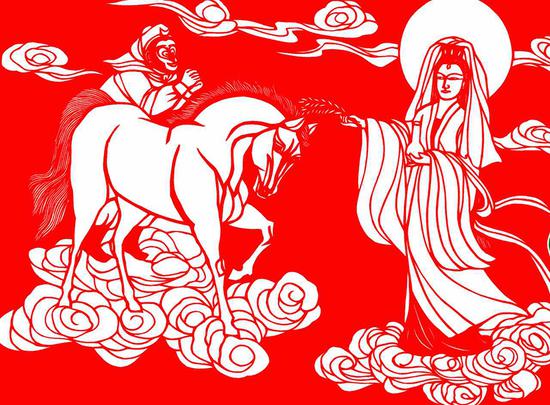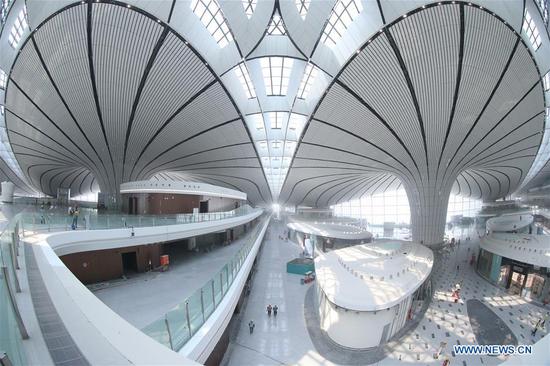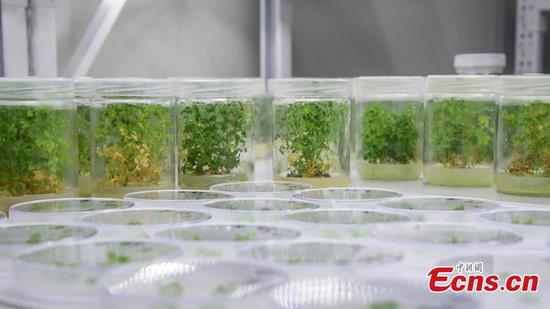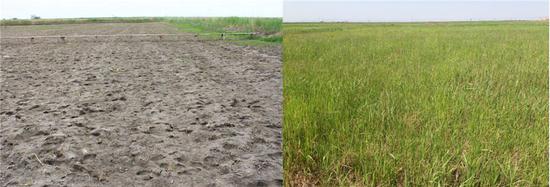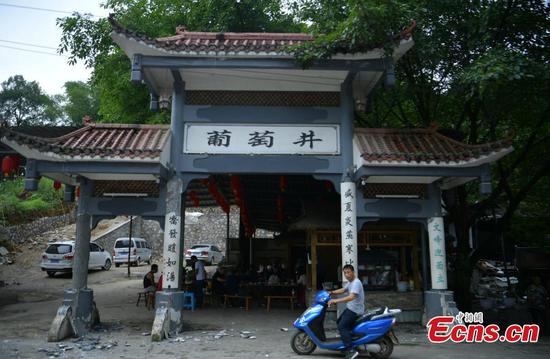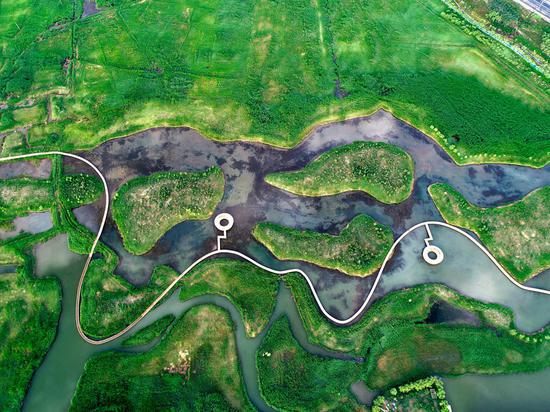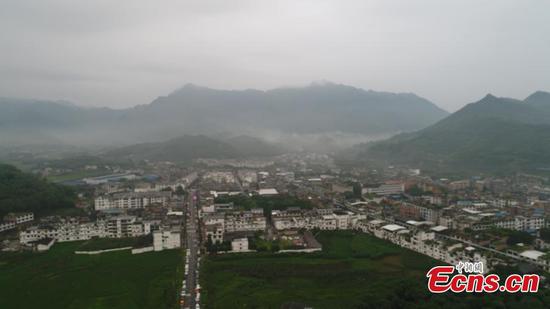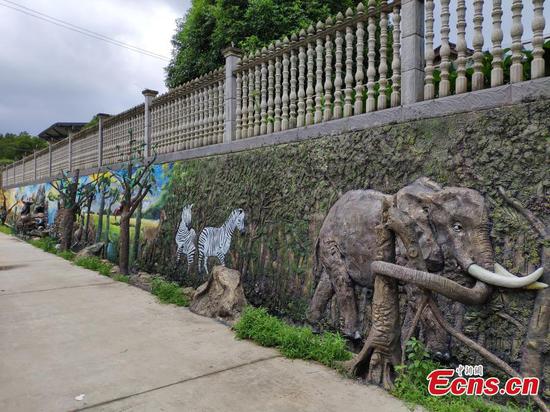
Orchard workers bag walnuts in Yecheng county, Kashgar. HU HUHU/XINHUA
Environmental benefits
According to local meteorological authorities, Makit saw 100 millimeters of rainfall last year, compared with only half that amount a decade ago. Meanwhile, sandstorms only occur about 50 days a year, from about 150 in 2009.
Wang said a positive cycle is being developed, because "more rain makes the rest of the work easier". At present, irrigation is essential to the survival of saplings in the first year after planting, but the rise in rainfall is expected to result in a shorter period of dependency.
In addition to the environmental progress, the man-made green belts provide vast swathes of land for the cultivation of cash crops that thrive in arid conditions.
In 2016, Wang's team began planting cistanche tubulosa in the woods. The parasitic plant - which has high added value due to its wide use in traditional Chinese medicine and cooking - obtains nutrients and water from the saxaul it grows upon. It is fast-growing too, and is ready for sale just 18 months after planting.
Figures provided by the local government show that 1 hectare of treated land produces about 2,250 kilograms of cistanche tubulosa per harvest, bringing in net profit of about 10,500 yuan. Cultivation of the hardy desert plant has provided jobs for about 200 poor farmers.
Wang said the team is exploring other ways to generate profits from the improved environment, such as developing organic farming by raising chickens in the shade provided by the saxaul trees.












